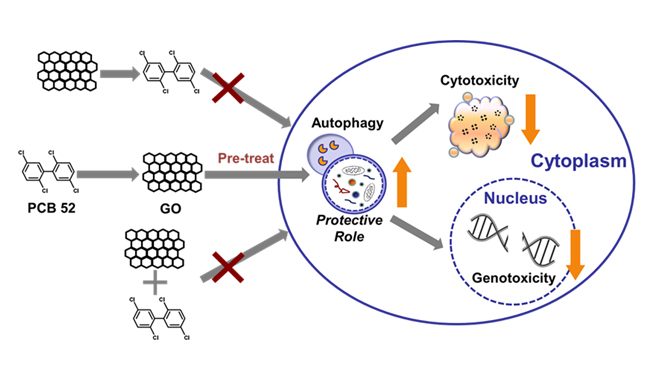Graphene Oxide Triggers Autophagy To Clear Toxic PCBs
Pre-treating cells with graphene oxide helps them to resist exposure to toxic polychlorinated biphenyls by upregulating autophagy, researchers say.

AsianScientist (Apr. 25, 2016) - A team led by Professor Xu An from the Institute of Technical Biology & Agriculture Engineering, Hefei Institutes of Physical Science of Chinese Academy of Sciences, has shown that graphene oxide could be useful in removing toxic polychlorinated biphenyls (PCBs) from the environment. Their findings were published in Environmental Science & Technology.
PCBs are highly stable environmental contaminants that leach from products such as electrical insulation, flame retardants and carbonless copy paper. Highly fat soluble, they are known to accumulate in the human body and cause endocrine disruption and neurotoxicty.
As a two-dimensional carbon based nanomaterial, graphene oxide has potential applications in various fields, such as electronics, biomedicine, environmental protection, owing to its unique structural, mechanical, optical, and electronic properties. In particular, the large surface area and abundance of oxygen-containing functional groups of graphene oxide is thought to make it a good absorber of pollutants such as PCBs.
To investigate whether graphene oxide could reduce the impact of PCB contamination, the researchers used human-hamster hybrid cells (AL cells) as a highly sensitive model of mutation detection. They found that pre-treatment with graphene oxide dramatically decreased cell death and gene mutation caused by PCB 52.
Furthermore, the researchers demonstrated that the adhesion and uptake of graphene oxide nanosheets by AL cells caused the production of reactive oxygen species. Together, the uptake of nanosheets and the oxidative stress were found to induce a cellular process known as autophagy, where cells digest and recycled unwanted products.
The authors speculate that the accelerated degradation of impaired organelles, proteins, and PCB itself that was triggered by pre-treatment with graphene oxide established a protective barrier and improved the capacity of the cells to resist toxic substances.
These findings shed new light on the role of autophagy in toxic responses and the potential application of graphene oxide in PCB disposal, environmental and health risk assessment.




